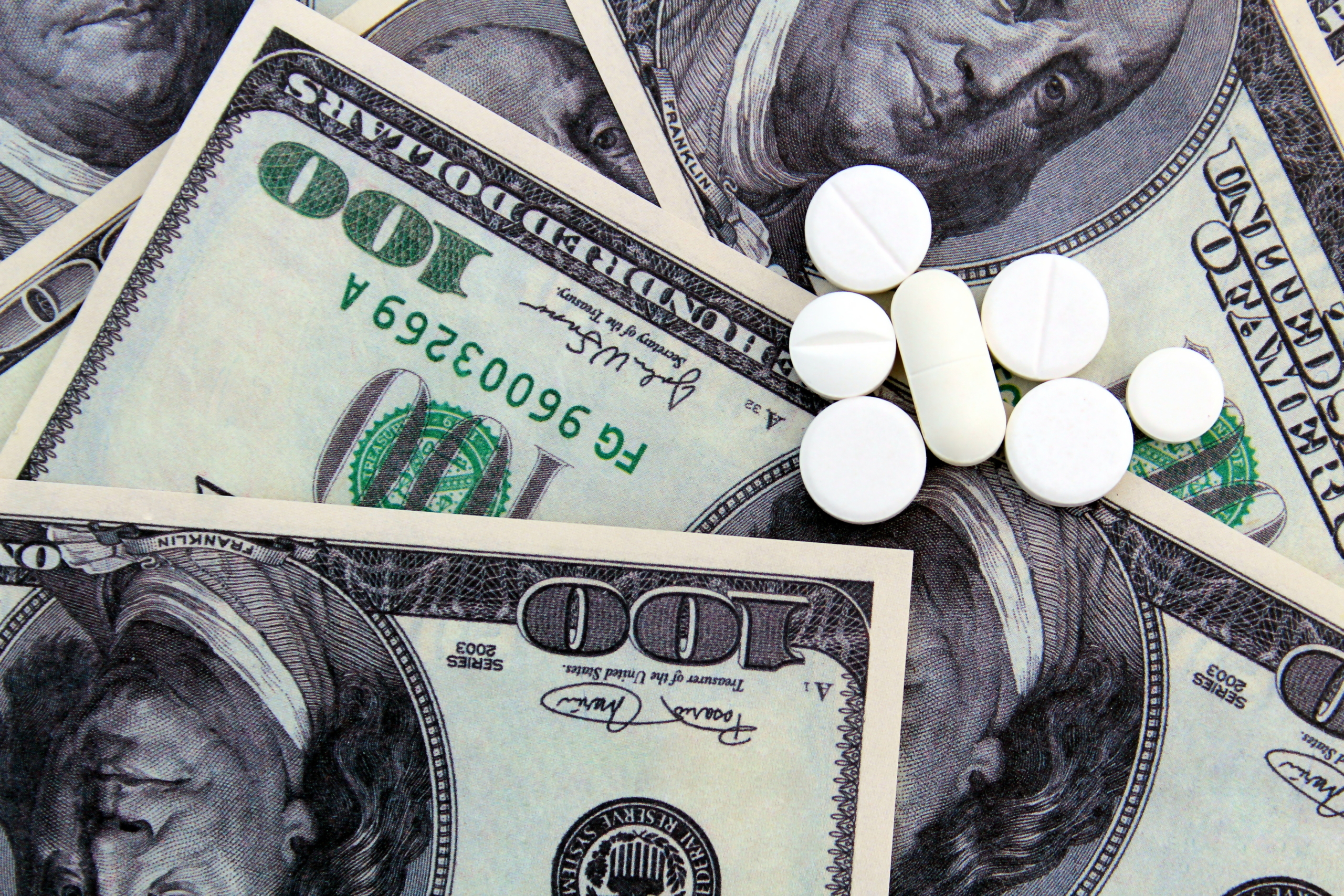Unlocking the Value of Combination Therapies



A Center for Global Development (CGD) paper authored by OHE’s Adrian Towse and CGD’s Rachel Silverman Bonnifield shows a very high expected return on investment (ROI) for a program to incentivise antibiotic development via a US government subscription-based pull mechanism.…

A Center for Global Development (CGD) paper authored by OHE’s Adrian Towse and CGD’s Rachel Silverman Bonnifield shows a very high expected return on investment (ROI) for a program to incentivise antibiotic development via a US government subscription-based pull mechanism. Proposed legislation (the PASTEUR Act) could make this ROI a reality, saving millions of lives.
Antimicrobial drugs form the backbone of modern medicine—but they don’t last forever. New antibiotics are needed to fight the growing threat of drug-resistant infections, which already kill an estimated 35,000 Americans and 1.27 million global citizens every year. But the R&D pipeline for new antimicrobials is sparse, for reasons discussed in a recent series of OHE blogs. In short, market failures stop private companies from capturing a sufficient return on investment (ROI) despite the very high social value of new antimicrobials.
Widespread recognition of these market failures has driven a search for creative solutions and generated enthusiasm for the use of “pull mechanisms” to help incentivise antibiotic development. One particularly promising pull approach—so-called “subscription models”—would offer guaranteed annual payments to successful antibiotic developers delinked from sales volumes.
The good news is that the UK has already piloted a subscription model, and the European Union (EU) is exploring similar mechanisms. Most importantly, given the US accounts for around 50% of G7+EU GDP, this approach has captured the attention of US lawmakers. A subscription-based pull mechanism is included in the pending PASTEUR Act, which is legislation introduced by lawmakers in the US House of Representatives and Senate and endorsed in President Biden’s 2023 budget request.
In a new paper, published by the Center for Global Development (CGD), OHE’s Adrian Towse and CGD’s Rachel Silverman Bonnifield estimate the expected return on investment for such a program—that is, an ambitious new program to incentivise antibiotic development via a US government subscription-based pull mechanism. We don’t explicitly model the PASTEUR Act; instead, we construct an illustrative example from first principles, with parameters drawn (where possible) from the literature, and using some simplifying and deliberately conservative assumptions about program design and remuneration. Nevertheless, the results are indicative of the PASTEUR Act or any other similar initiative.
And the great news for the US and the world is that such an investment would offer a massive pay-off.
We summarise the returns on investment in Figure 1 below.

Figure 1: US and Global Returns on Investment
The US Return on Investment from Pulling New Antibiotics to Market is Huge
From the US perspective alone, we find that such a program is likely to offer an extraordinary ROI in both the short and long term. Considering both the value of averted death/disease and associated hospital costs, every dollar invested would yield $6 of value over the program’s first ten years and $28 over a 30-year time horizon (Table 1). It would save 20,000 American lives over the next decade and 383,000 over the next 30 years (Figure 2).
Table 1: Domestic US Costs and Benefits, over 10 years and over 30 years
|
|
Total Cost (Discounted) |
Lives Saved |
DALYs Saved |
DALY Value |
Healthcare Savings (Discounted) |
DALY + Healthcare Savings (Discounted) |
Benefit: Cost Ratio |
|
10-Year |
$5.4 bn |
20,000 |
340,000 |
$30.0 bn |
$2.0 bn |
$32.0 bn |
6:1 |
|
30-Year |
$17.9 bn |
383,000 |
6,510,000 |
$470.7 bn |
$24.0 bn |
$494.8 bn |
28:1 |
Figure 2: US lives saved over 30 years

And the Global Impact is Even Bigger
From the global perspective—exclusively considering the health value of DALYs averted—ROI is even more significant (Table 2). The results imply a 30-year global ROI of 125:1. Sensitivity analysis suggests that the overall finding (e.g., very high social returns) remains robust under a wide variety of alternative assumptions and scenarios.
Table 2: Global Costs and Benefits, over 10 years and over 30 years
|
|
Total Cost (Discounted) |
Lives Saved |
DALYs Saved |
Value of DALYs Saved |
Benefit: Cost Ratio |
|
10-Year |
$11.7 bn |
518,000 |
19.5 million |
310.6 billion |
27:1 |
|
30-Year |
$38.9 bn |
9,933,000 |
374.5 million |
4,874.2 billion |
125:1 |
We expect other G7 and EU countries to pay their fair share of the global incentive payments, so the global cost is higher than the American contribution. However, the global impact is enormous – 518,000 lives saved over the next decade and almost 10 million by 2053, as shown in Figure 3.

Figure 3: Global lives saved over 30 years
Time to Act!
The PASTEUR Act, as revised in September 2022 (Senate Congressional Record), would allocate $6 billion over ten years to subscription payments for new antibiotics. For each novel antimicrobial, the bill text would authorise a minimum total subscription value of $750 million and a maximum total subscription value of $3 billion, with payment varying based on each new agent’s efficacy and degree of innovation. Our mean cost estimate for the US share of a subscription payment ($2.1 billion per drug, on average) is thus aligned with the payment parameters suggested under the proposed PASTEUR Act.
Our findings suggest a very high return on investment from a US subscription program to incentivise the development of new antimicrobials. Our estimates are robust to many different scenarios and parameters, with high impact both within the US and worldwide in averting deaths, reducing morbidity, and helping contain healthcare expenditure. These findings offer a strong rationale for the US Congress to pass and fully fund the PASTEUR Act and for the US government to press for coordinated international action across its G7 and G20 partners. Indeed, the June 2022 communique from the G7 meeting included the words “strengthen research and innovation for new antibiotics in international partnerships, and incentivise the development of new antimicrobial treatments with a particular emphasis on pull incentives.”
We conclude that the US Congress has excellent legislation on the docket that would protect American citizens, yield huge returns, and create a safer, healthier world. We encourage the US Congress to urgently finance and authorise the PASTEUR Act, leveraging American ingenuity to boost our shared health future.
Citation
Towse, A. and Silverman Bonnifield, R. 2022. “An Ambitious USG Advanced Commitment for Subscription-Based Purchasing of Novel Antimicrobials and Its Expected Return on Investment.” CGD Policy Paper 277. Washington, DC: Center for Global Development. An Ambitious USG Advanced Commitment for Subscription-Based Purchasing of Novel Antimicrobials and Its Expected Return on Investment | Center for Global Development | Ideas to Action (cgdev.org)
Related Research
OHE four-part blog series: The Economics of Antibiotics discussed the economics of antimicrobial resistance:
References
An error has occurred, please try again later.
This website uses cookies so that we can provide you with the best user experience possible. Cookie information is stored in your browser and performs functions such as recognising you when you return to our website and helping our team to understand which sections of the website you find most interesting and useful.
Strictly Necessary Cookie should be enabled at all times so that we can save your preferences for cookie settings.
If you disable this cookie, we will not be able to save your preferences. This means that every time you visit this website you will need to enable or disable cookies again.
This website uses Google Analytics to collect anonymous information such as the number of visitors to the site, and the most popular pages.
Keeping this cookie enabled helps us to improve our website.
Please enable Strictly Necessary Cookies first so that we can save your preferences!


